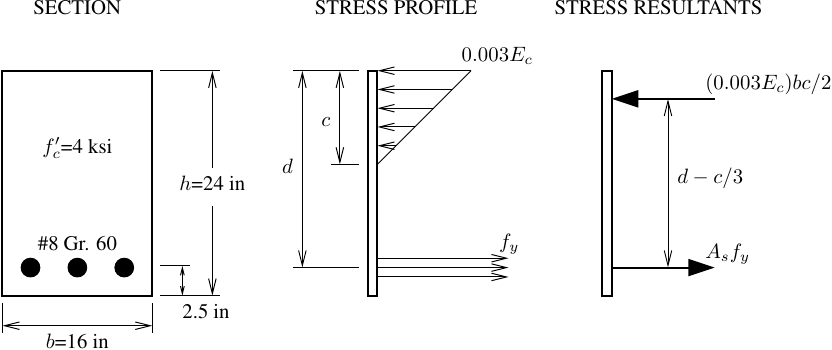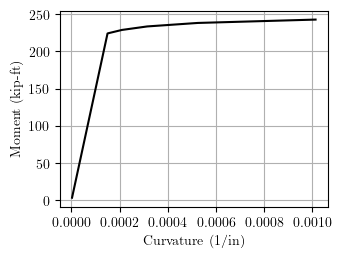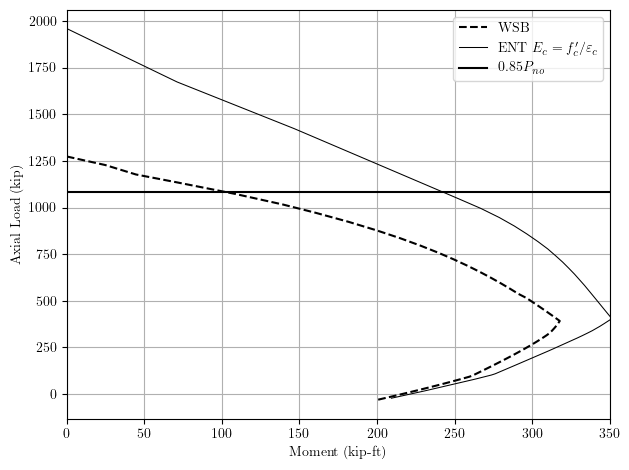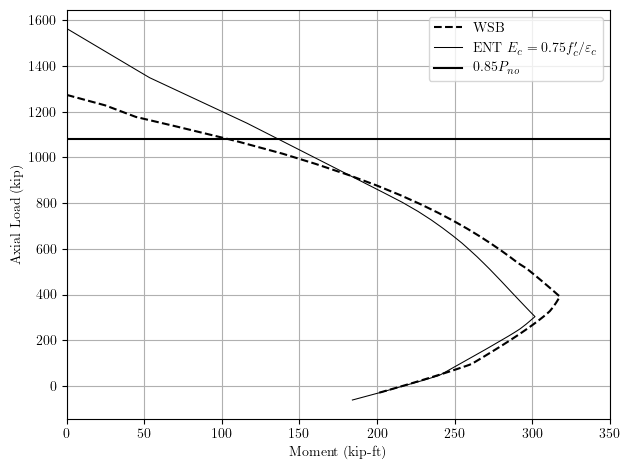OpenSees Cloud
OpenSees AMI
Concrete Zero
Original Post - 09 Jul 2023 - Michael H. Scott
Show your support at Buy Me a Coffee.
What is the depth of concrete uniaxial stress-strain models compared to the pinnacle that is Concrete23? No, it’s not Concrete01–that’s base camp for all the ConcreteXY that followed.
The most basic uniaxial concrete model in OpenSees, “Concrete00” if you will, is elastic-no-tension, or ENTMaterial. As its name implies, the ENTMaterial response is elastic in compression and zero in tension.
But what stiffness you give ENT depends on what you’re modeling. For low levels of stress, the concrete modulus is fine, but for higher levels of stress, a secant modulus is better.
ksi = 1.0
psi = 0.001*ksi
# Compressive strength and corresponding strain
fc = 4*ksi
epsc = 0.002
# Approximation of initial modulus
Ec = 57000*(fc/psi)**0.5*psi
# or use secant modulus
Ec = fc/epsc
ops.uniaxialMaterial('ENT',1,Ec)
The ENTMaterial has two additional parameters to give the model a small
amount of tension strength using the tanh function. Thanks to
Seweryn Kokot,
who kept all the cvs and svn logs for OpenSees, I found that
Frank added this functionality in 2010.
Anyway, how does this crude approximation of concrete stress-strain response fare in a moment-curvature analysis of an RC beam? Consider the RC section shown in a previous post. The compression block is triangular when using the ENT model for concrete.

With the ENT stiffness as \(E_c=f'_c/\varepsilon_c\)=2000 ksi, solving for the nominal moment strength gives 243.1 kip-ft. The Whitney stress block (WSB) approximation of the moment strength is 239.3 kip-ft. That’s spot on!
Doing a section analysis in OpenSees using ENT for the concrete and elastic-perfectly-plastic (EPP) for the steel gives the moment-curvature response shown below.

The moment strength reported by OpenSees, using ENT for the concrete fibers, is 242.8 kip-ft.
Great! But let’s not get our hopes up yet. If we kept on increasing curvature, the moment strength would steadily increase (due to increasing moment arm) because the concrete never crushes.
As you add axial load, we can see better that the ENT approximation does not do so well, as shown in the P-M interaction curve below computed with \(E_c=f'_c/\varepsilon_c\)=2000 ksi.

Note, this P-M interaction curve was developed for the section in another previous post, not the section used for the moment-curvature analysis previously in this post. At any rate, the ENT assumption leads to very high axial load capacity.
Reducing the ENT stiffness, e.g., to \(E_c=0.75f'_c/\varepsilon_c\)=1500 ksi, gets the interaction curve closer to WSB, but we’re starting to shoot in the dark. However, remember that the WSB is also an approximation–not the right answer. It’s reinforced concrete after all.

I’m not advocating that you start using ENTMaterial for all of your reinforced concrete analyses. But I bet your IDA results using ENT concrete and EPP steel will not be terribly different from what you get with Concrete23 and Steel08–and the analyses will run much faster.
Like all uniaxial materials in OpenSees, the ENTMaterial is not limited to concrete fiber applications. This model is good for compression-only bridge abutments and contact models with no gap.